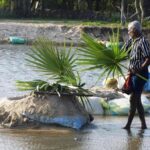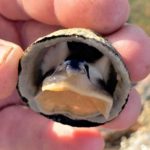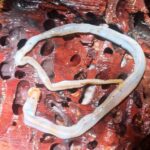Bibi worms (Sipunculus nudus Linnaeus, 1776) belong to the Peanut worm phylum. They can be dug up at the intertidal zone of flat, sandy beaches on temperate and tropical beaches. These worms are primarily used as top fishing bait. At least in Southern China and Southeast Asia, they are also used for human consumption.

Global distribution
Bibi worms occur circumpolar on temperate and tropical sandy beaches, as seen by the Computer simulation below of this species’ native habitats.

Preferred habitat
Bibi worms occur from intertidal zones to sea beds down to great depths. We caught them in southern Thailand’s Koh Lanta and Tubkaek Beach intertidal zones. These zones run dry twice daily, so we could see them on dry feet. They can be caught all year round.
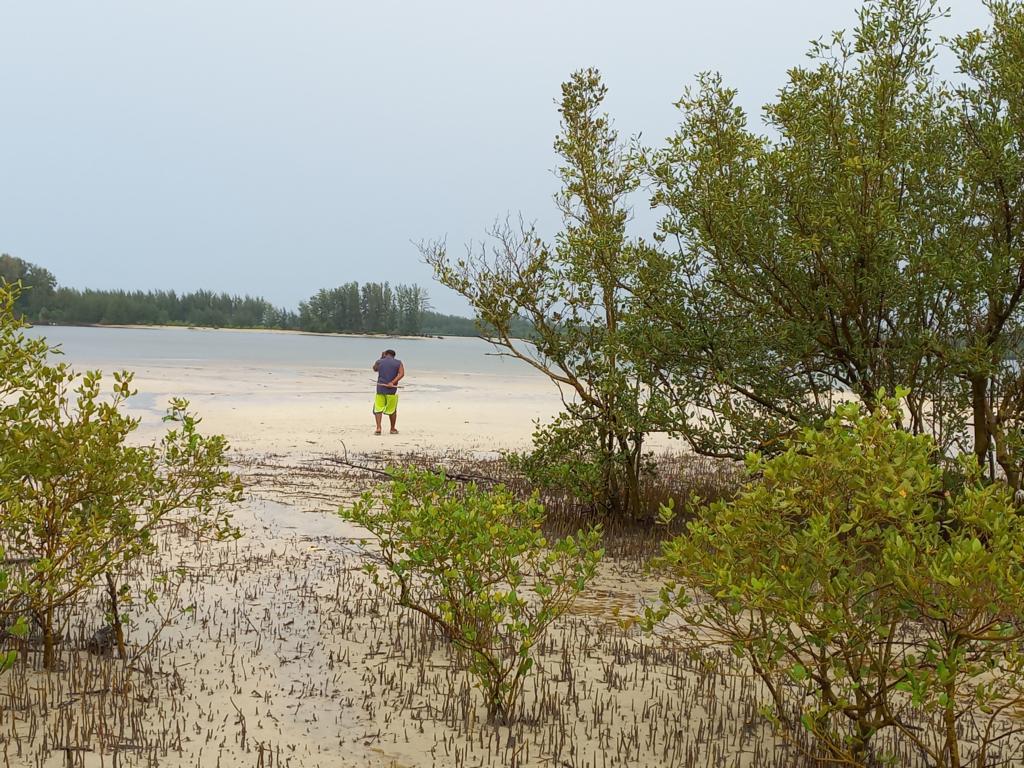
S. nudus prefers to live on beaches adjacent to mangrove forests, where there is much organic matter. These worms appear more frequently when the sediment’s sand content is high. Bibi worms are impossible to find if the sand content is less than 60% or if there is more than 15% clay in the sediment.
They live in burrows in the sediment, with half of their body lying within the aquifer and the other half in wet sand to breathe. Therefore, the depth of their sand burrow depends on the distance to the low-tide watermark. Usually, they reside between 40-60 cm / 16-23’’ below the sediment’s surface.
Description of Bibi Worms
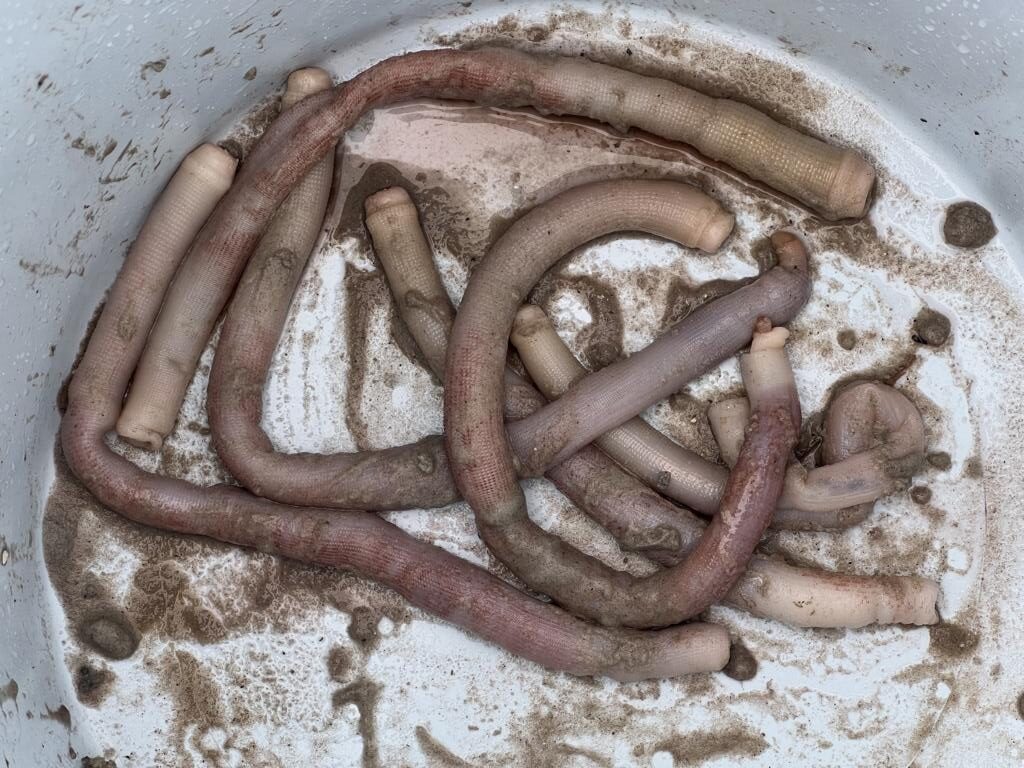
The whole worm is a bag of muscles, which appears to have an opening on either end. This, however, is an optical illusion, as the front part of the mouth with tentacles and introverts retracts when handled inside the body. The glans region is also retracted in the protective muscle covering at the hind end.
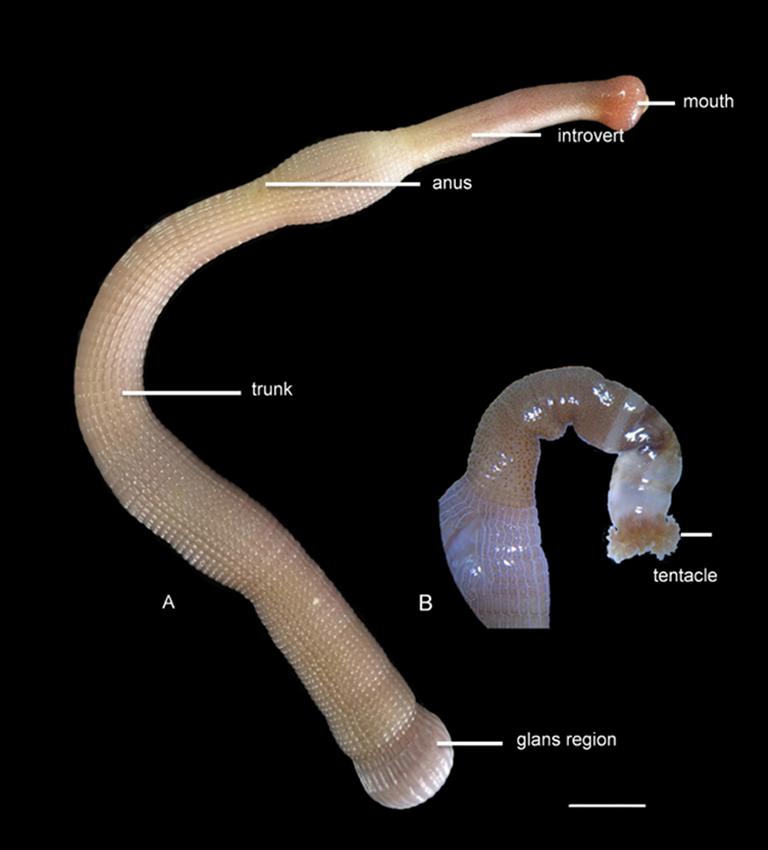
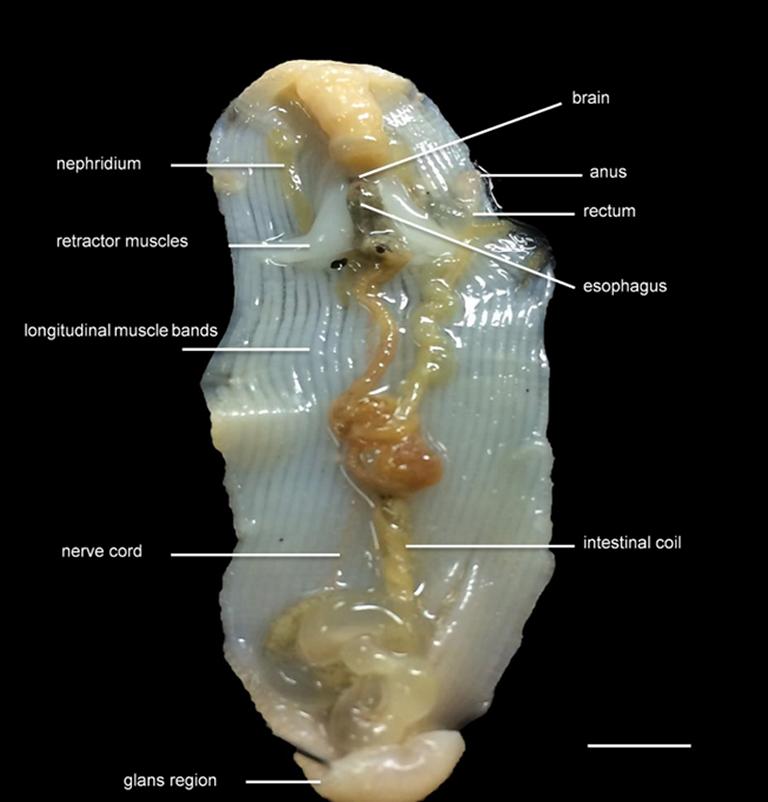
The outer diameter of the Thai variant of Bibi worms (locally called วาวา – Waawaa) is between 1,5-2 cm / 0.6-0.8’’, and the entire length of the worms we caught was up to 30 cm / 12’’. A more detailed description of these worms can be found here.
Methods to catch them
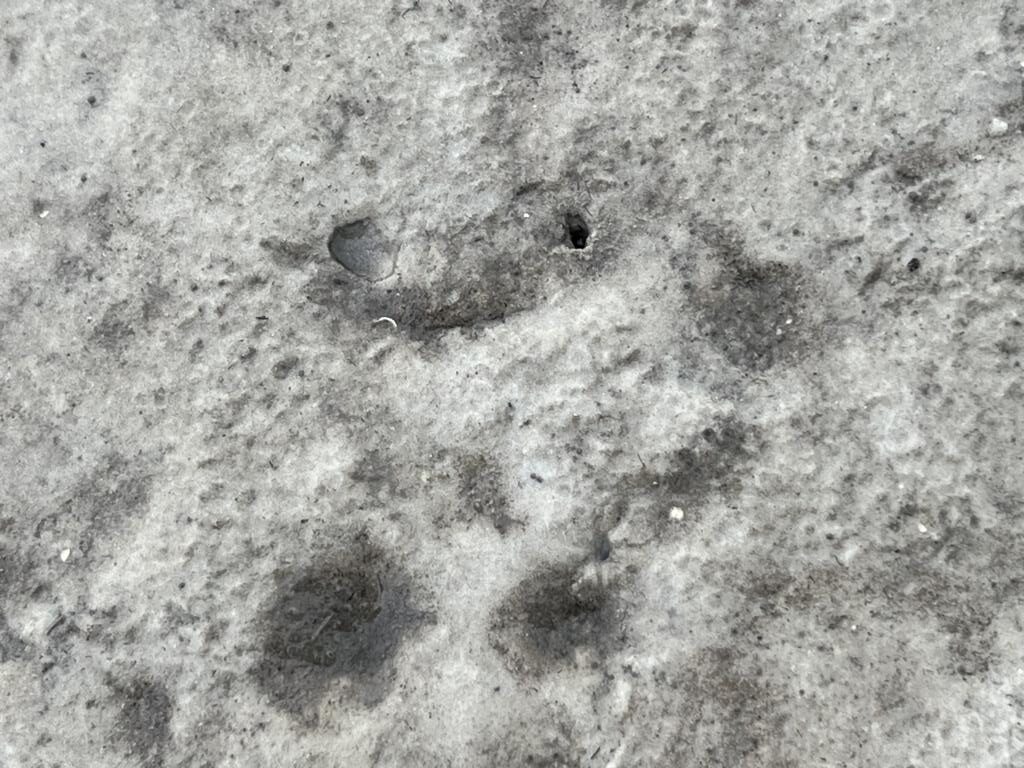
Before catching them, they have to be found. This is difficult, as tidal sandflats show many siphon holes from clams and worms. Bibi wormhole openings are about 1cm / 0.4’’ wide, not covered by sand, and no water is visible inside them. The surroundings of the hole’s mouth are not littered with any debris, and no tentacle marks are visible. These holes must be sought out for the next step of catching them.
For that, people walk along the sandflats and probe each potential hole they see. Walking has to be done cautiously, as the worms will detect vibrations and retract deep into their hole.
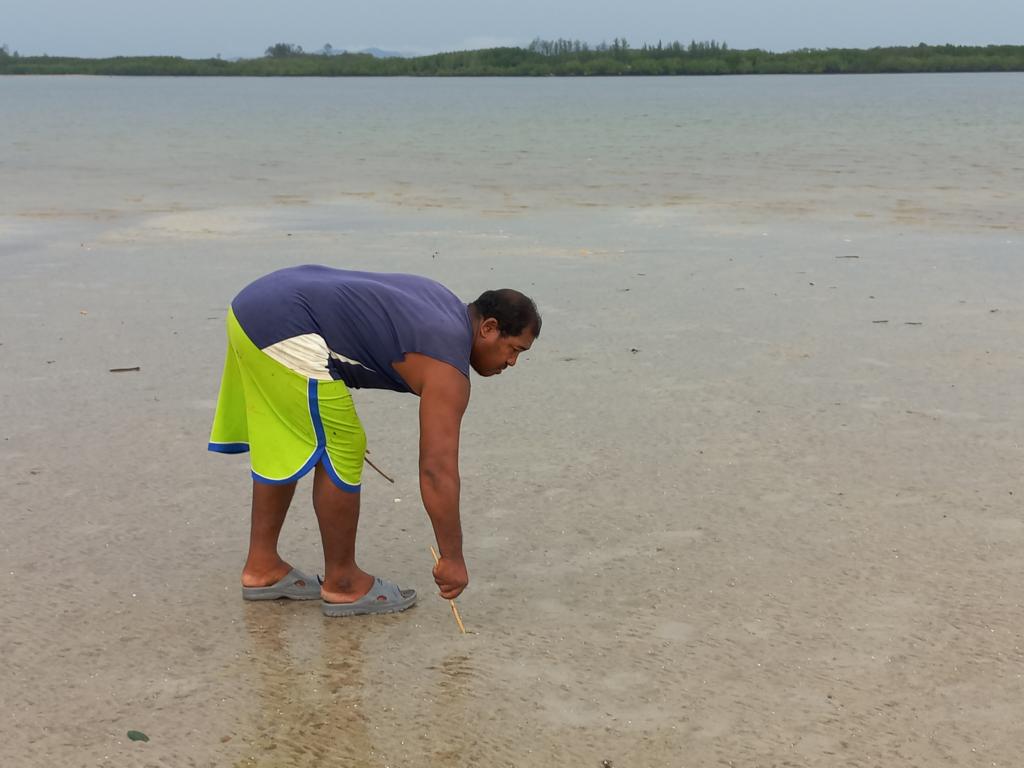
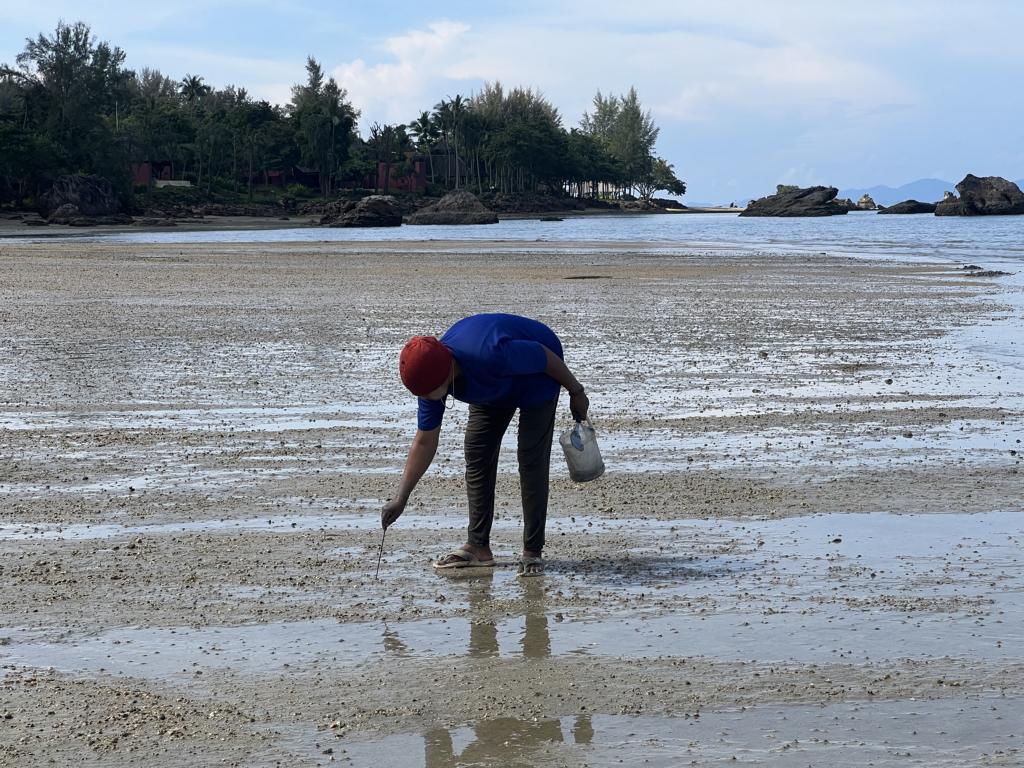
When finding such a hole, a long, thin tool will be speedily and forcefully poked into it to penetrate their bodies and hold them in position.
Sticking tools
Two types of sticking tools are used. One is a wooden stem, at one end of which a knobby point was carved. The stem extends asymmetrically to that point, forming a kind of barb. See the pictures below.
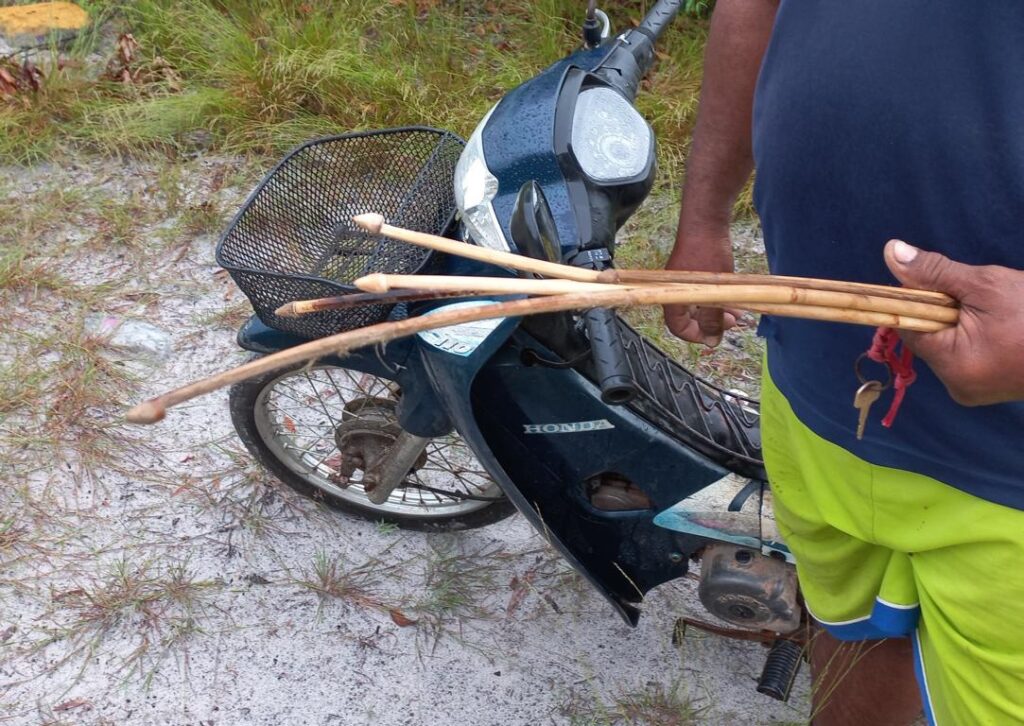
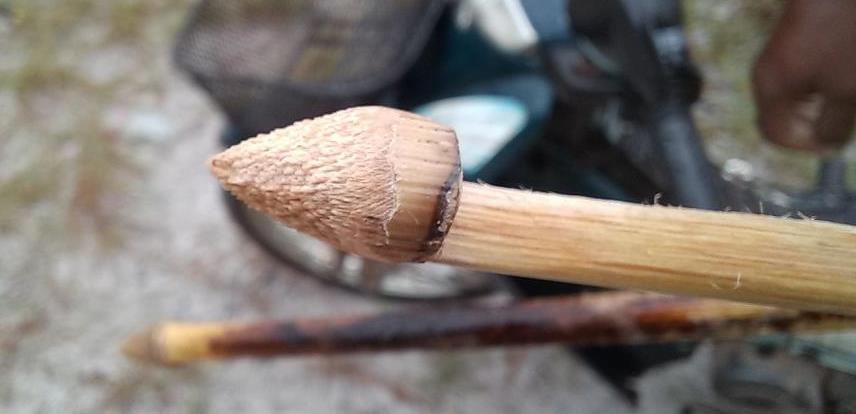
Another device is a thin, long metal spoke from a bicycle wheel. The worms will be fixed in position by turning the spoke deep below the hole to an angle and holding them this way.
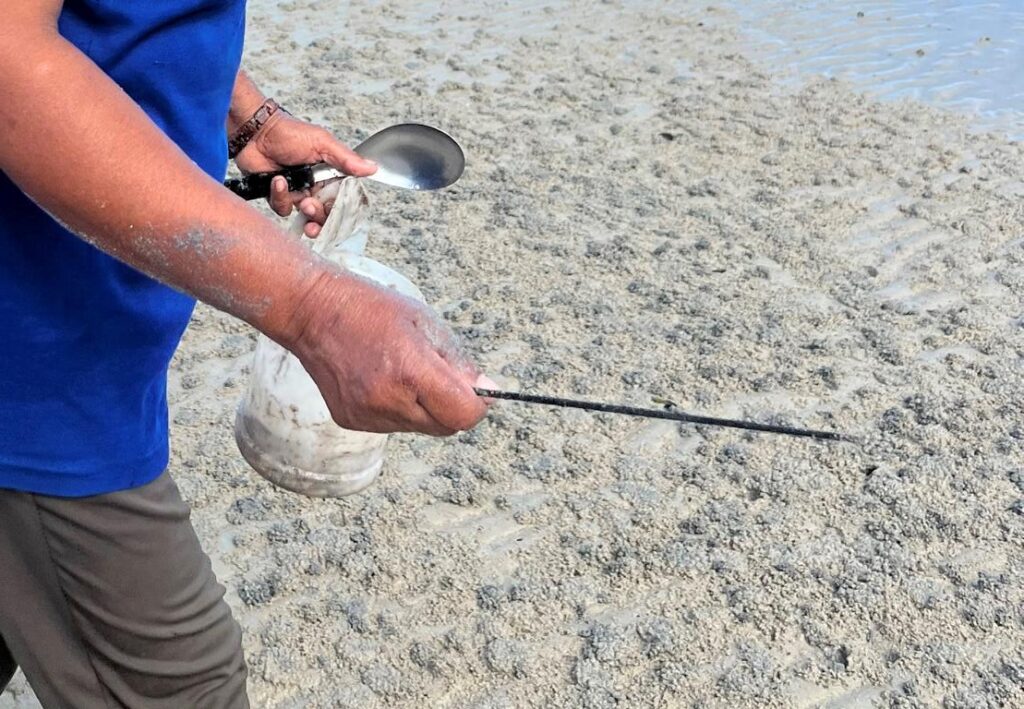
Digging tools
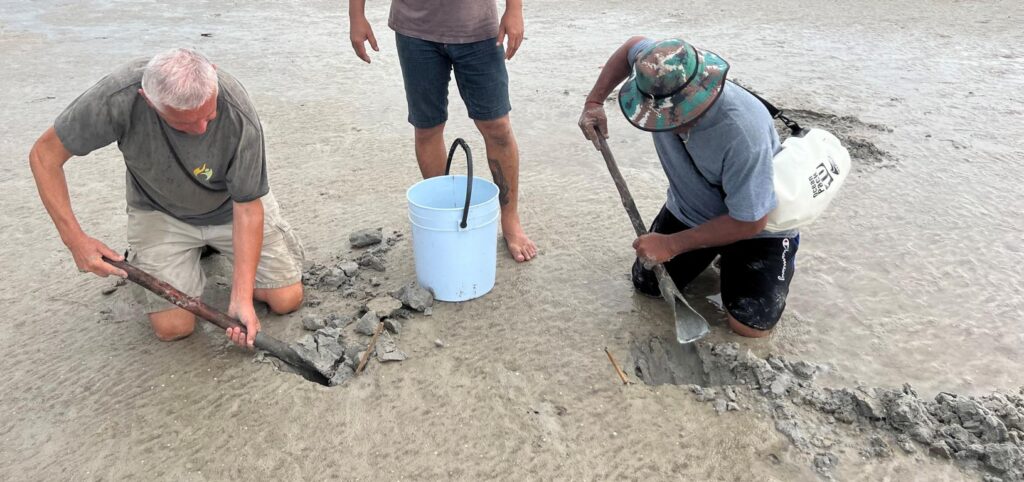
Digging the fixated worms out of the hole is done with a local shovel or an over-dimensional spoon. In other countries, using a 10cm / 4’’ pipe to ram vertically down the hole and remove the sand (and worm) this way is common.
Videos of how to catch Bibi worms in Southern Thailand
How to stick them
Digging with a shovel
Successful extraction of a Bibi worm from the hole
Live Sipunculus nudus worms are reddish on the body, whereas dead worms turn whitish. The worm in the picture below is still alive. In November 2023, they could be sold locally for THB 20.- (USD 0.55) per piece. For comparison, a bowl of needle soup costs about THB 40.-.
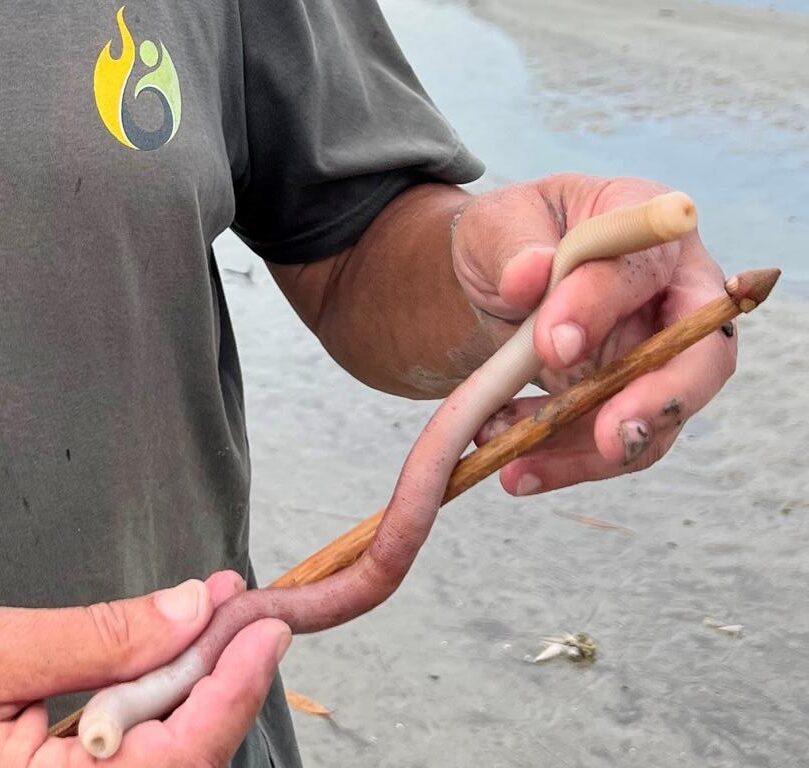
Preparing Bibi worms for food on Koh Lanta
Ulak Lawoi people (Sea Gypsies) on Koh Lanta traditionally prepare these worms in soup or curry. No vegetables or other ingredients are added to a soup, just a bit of salt for flavoring. The pieces of worms taste like noodles, and the texture is like macaroni al dente. The whole dish does not taste bad but is a bit boring.
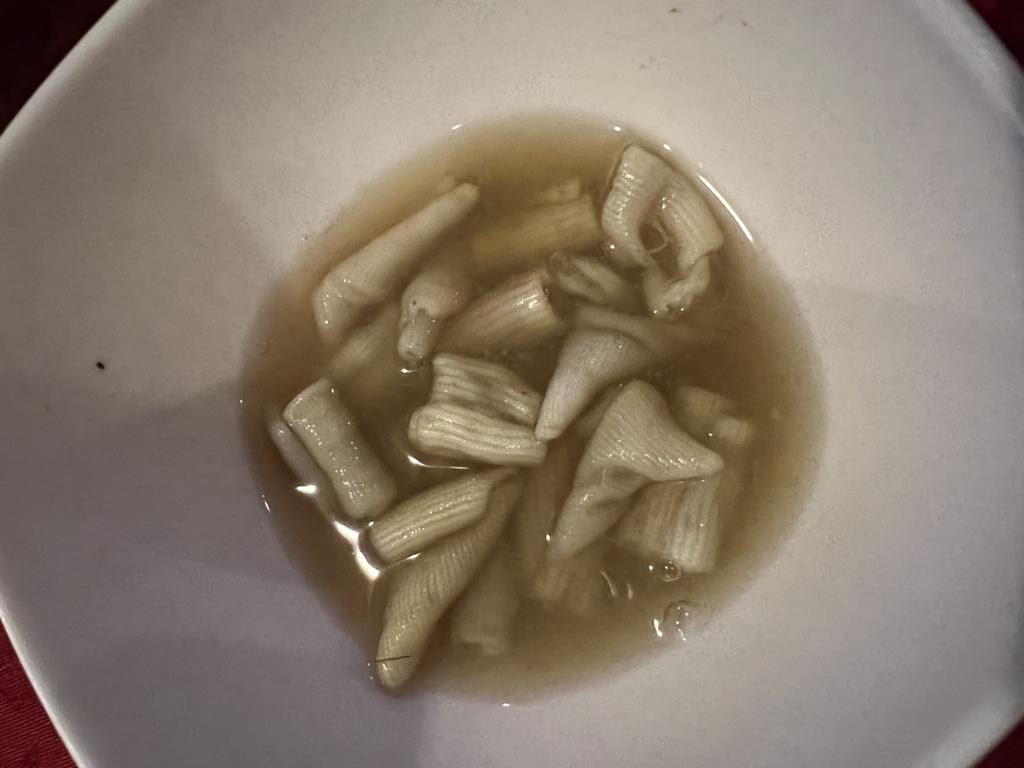
If the worms are prepared in a curry, things are different. Again, the texture is like flat noodles with a bit of bite. However, the curry’s flavor complements the worm skins perfectly. This was a heavenly dish for my wife and me. When we ate, the spicy flavor in our mouths cried for an ice-cold beer, which we highly enjoyed.
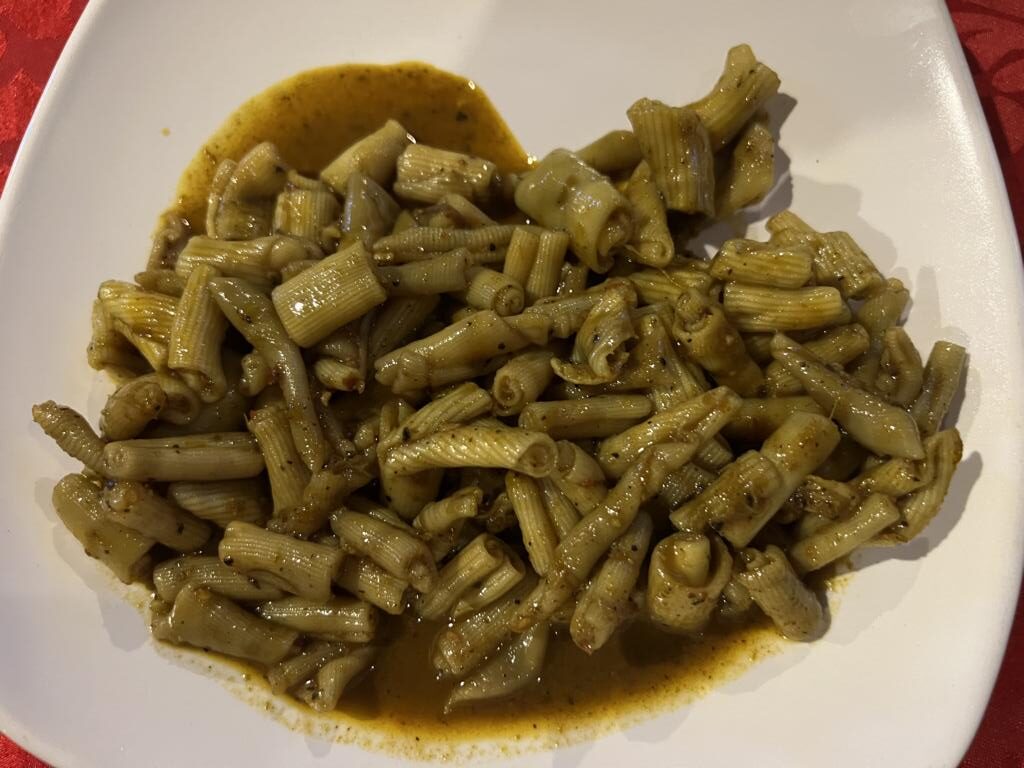
At the end of this article, I want to thank my friend Mr. Butkangtia (Sombat) Kangtia from Narai Hut Koh Lanta for introducing us to the leader of the Ulak Lawoi community on the island. Without him, it would not have been possible to record this and many other local fishing, foraging, and collecting methods. Besides that, Narai Hut has excellent food, and Sombat speaks good English.
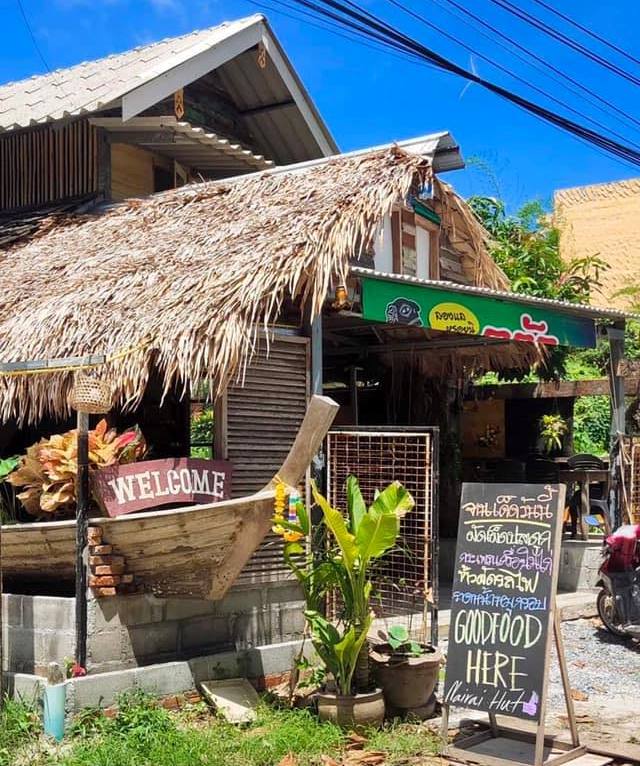
Lessons learned from collecting Bibi worms on Koh Lanta:
- Sipunculus sp. worms can be found circumpolar on sandy beaches of temperate and tropical seas.
- These worms need at least 60% sand in the sediment and not more than 15% clay.
- They are caught by finding their breathing holes and fixating them with sticks.
- The Bibi worms will be gutted and cleaned, cut into 32mm / 1 ¼ ’’ long pieces, and cooked as soup or curry.
- The taste and texture of cooked Bibi worms resemble macaroni al dente.
.



